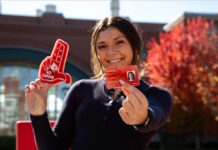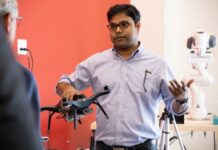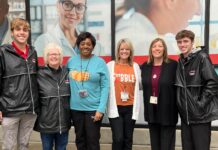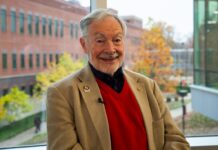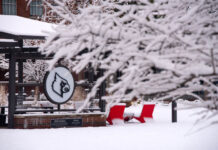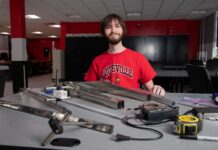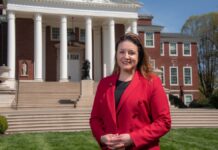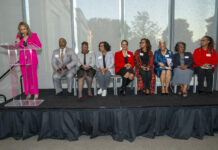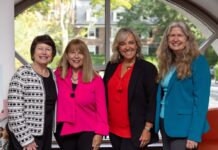McCarthy was in the process of trying to decide the direction his work should go and what themes he should explore when he attended an International Day of Peace service.
I was overwhelmed, with the beautiful service and with how the speakers tied together environmental issues, peace and justice, McCarthy said.
That’s really what catapulted me into the work I’ve done the last year, he said.
McCarthy will open Contrast and Context: Imaging Peace and Justice Dec. 2.
The exhibit focuses on preserving the environment, consumerism, economic and political ethics, gender equity, racial and cultural diversity, he said.
It includes a piece to which UofL students contributed, and also is accompanied by Peace Postcards Continue, an Interfaith Paths to Peace project that asks people to draw what peace looks like to them — and from which McCarthy said he has found inspiration.
I’ve had the pleasure of reading and viewing hundreds of those postcards, he said. In some way they’ve inspired me. It’s definitely influenced my work.
Contrast and Context will include a range of McCarthy’s work, from a globe-shaped fountain with an environmental message to smaller talking heads that point out with humor the good and bad in everyone.
Students in McCarthy’s art education class pitched in on one of the exhibit’s larger pieces — a figurative relief sculpture of the late Louisville civil rights activist Anne Braden and her book The Wall Between.
Honoring Braden was a serendipitous thing, said McCarthy, explaining that he attended an open house at UofL’s Anne Braden Institute for Social Justice Research, got inspired and asked his class if they’d be interested in working with him on the piece.
I have used an image of Anne taken from an old photo with her standing in front of a brick wall. The sculpture includes real bricks created by a couple of dozen UofL art education students, each incised by the student with a single word, such as peace, hope, equality, he said.
The collaboration, McCarthy said, taught the students about the creative process and about what brings a person to get into that part of their brain and be creative.
Although it was based a lot on my creativity, I encouraged them to join me in thinking about how to convey the messages they wanted to communicate. Students not only had to select appropriate words, but also had to find a way to inscribe them on the bricks they made.
I think I’ve seen a renewed spark in their creativity and that art can be something larger than just the marks that they make. The fact that they spent a little while building this brick and everybody else spent a little while, we have a piece that’s larger than ourselves, he said.
That concept — everyone working together to create something larger than himself — carries through to the message McCarthy wants to convey through the exhibit.
I want it really to come across as hopeful and positive, he said. I want people to see that there are things that we can do in all the areas of peace and justice that can be positive and bring people closer together and renew our world.


